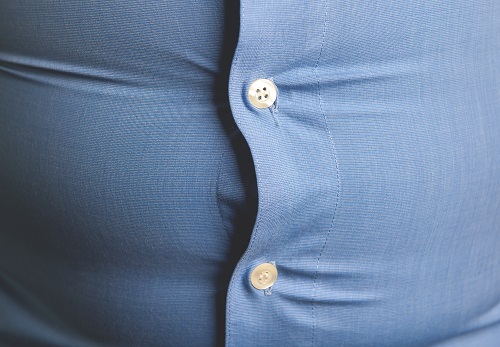Obesity raises the risk of infection, severity of disease, and mortality from COVID-19, particularly in young patients diagnosed with the virus.
Obesity-associated comorbidities such as hypertension, diabetes, and ischemic heart disease (IHD) are the three most common comorbidities observed in COVID-19 deceased patients. The high global prevalence of obesity is impacting infection rates and worsening the pandemic in countries all over the world.1
Obesity and Predisposition to SARS-CoV-2 Infection
Obesity is an excess accumulation of body fat (20% above normal body weight) that has a detrimental effect on health. Body mass index (BMI) is used as a common indicator to measure obesity. Studies to date have shown increased expression of angiotensin-converting enzyme 2 (ACE2) receptor in adipose tissue, or fat. ACE2 receptor, an enzyme attached to membranes of cells in the lungs, arteries, heart, kidney, and intestines, is recognized as a coreceptor for Severe Acute Respiratory Syndrome Coronavirus 2(SARS-CoV-2), the virus that causes COVID-19. Hence, having more adipose tissue and consequently more ACE2 receptors leads to a higher likelihood of catching SARS-CoV-2. ACE2 is also primarily expressed in visceral fat (located deep in the abdomen and around internal organs) and less so in peripheral subcutaneous adipose tissue. Therefore, individuals with abdominal obesity could develop a more severe form of COVID-19. They may also be more likely to transmit the virus to others given their high viral load.2,3
See also: Medical Underwriting Evidence: COVID-19, Obesity, and Diabetes
Obesity’s Effect on Normal Body Function
Obesity, specifically abdominal obesity, reduces lung capacity through decreased diaphragmatic movement and compromises the entire respiratory system, resulting in impaired ventilation and reduced oxygen saturation. Being overweight also causes a persistent state of chronic low-grade inflammation and compromises the immune system by altering the response of cytokines (proteins secreted by cells in the immune system). This reduces immune response to viral infection, which negatively impacts disease progression, immunity from infection, and vaccine efficacy.4
Obesity’s Impact on COVID-19 Mortality and Morbidity
Studies to date have shown increased mortality outcomes for obese COVID-19 patients. The Open SAFELY study, which looked at COVID-19-related hospital deaths in the U.K., found increasing risks of death with increasing levels of obesity (BMI >40), more than twice that of non-obese patients (aHR 2.27).5 Bello-Chavolla et al showed a 26% increased mortality risk in the Mexican population for obese COVID-19 patients versus obese non-COVID-19 patients.2 Hussain et al’s meta-analysis of 14 studies on mortality in COVID-19 patients with and without obesity reported the following:4
- More than three-fold increased risk of death in those with a BMI >25 kg/m2 (odds ratio [OR] 3.68)
- Seven-fold increased need for respiratory support in those with a BMI >25 kg/m2 (OR 6.98)
- Double the risk of critical illness in those with a BMI >30 kg/m2 (OR 2.03)
See also: What can insurers learn about COVID-19 risk factors from OpenSAFELY, the largest cohort study to date?
A number of areas, many with large populations of people with lower socioeconomic status and higher prevalence of obesity, are seeing a higher mortality rate from COVID-19. The Bronx, New York has higher rates of obesity compared to other New York City boroughs and also the highest rate of hospitalization and death from COVID-19. Obesity (BMI > 35 kg/m2) was associated with in-hospital mortality (OR 3.78) and was a significant predictor for increasing oxygen requirements (OR 3.09) and intubation (OR 3.87).6
Obesity is highly prevalent in patients diagnosed with COVID-19 who require invasive mechanical ventilation (IMV). Obesity impairs ventilation at the base of the lungs, resulting in reduced oxygen saturation in the blood. Pulmonary function test results of COVID-19 patients with obesity have demonstrated reduced lung volumes. The Lille Intensive Care COVID-19 and Obesity study group in France reported that of the COVID-19 patients admitted to intensive care, 47.6% were obese (BMI >30 kg/m2) and 28.2% were severely obese (BMI >35 kg/m2). The severity of disease and subsequent need for IMV increased with BMI categories, reaching nearly 90% in in patients with BMI >35 kg/m2.7
Table: The association between obesity and invasive mechanical ventilation in COVID-19 patients7
Category (Ref: BMI <25) | Multivariate Odds Ratio (95% confidence interval - CI) |
|---|
BMI 25-30 kg/m2 | 1.69 (0.52 – 5.48) |
BMI 30-35 kg/m2 | 3.45 (0.83 – 14.31) |
BMI > 35 kg/m2 | 7.36 (1.63 – 33.14) |
In a study of obesity and COVID-19 in Shenzhen, China, of the 383 patients admitted with COVID-19, compared with normal weight patients, overweight patients had 1.84-fold increased odds of developing severe COVID-19, while obese patients had 3.4-fold increased odds of developing severe disease. Obese men versus normal-weight men were at even greater increased odds (OR 5.66) of developing severe symptoms.8
Popkin et al’s recently published meta-analysis of studies from more than 10 countries including nearly 400,000 COVID-19 patients showed that individuals with obesity were more at risk of COVID-19 (OR 1.46), twice as likely to be hospitalized (OR 2.13), more likely to be admitted to the intensive care unit (OR 1.74), and more likely to require IMV (OR 1.66). Obese patients with COVID-19 also had significantly higher mortality (OR 1.48). 9
Vaccination in Adults who are Obese.
Data from recovered COVID-19 patients shows that >95% of individuals develop neutralizing antibodies against the virus, but early evidence suggests that antibody protection wanes over a period of weeks to months. It is already known that T-cells in vaccinated obese adults are less activated when stimulated with vaccine strains of influenza. T-cells are required for protection and recovery from viral attacks and are activated by the immune system in response to infection. Therefore, poor T-cell function can leave vaccinated obese adults more susceptible to infection. Vaccinated obese adults may fail to seroconvert (when antibodies develop and become detectable in the blood) or reach seroprotective levels of antibodies. This suggests that a vaccine for COVID-19 may be less effective in individuals with obesity. 9
Vaccinated adults involved in a study during the 2013-14 and 2014-15 influenza seasons were found to have a 27% increased risk of developing influenza when overweight and have twice the risk when obese. Therefore, with the growing obesity epidemic, complications from influenza and COVID-19 can be expected to increase.10 When (hopefully) a COVID-19 vaccine becomes available, the level of protection it confers to overweight and obese individuals will need to be determined. It is therefore important that any vaccine trials include obesity as a potential influencer on vaccine effectiveness.
Summary
Overweight and obese patients with COVID-19 are at higher risk for severe disease and death. Having excessive adipose tissue also increases the risk of infection and the likelihood of transmitting the virus to others given their high viral load. Even if a vaccine becomes available, overweight and obese adults may fail to produce an immune response to protect against catching the virus.



